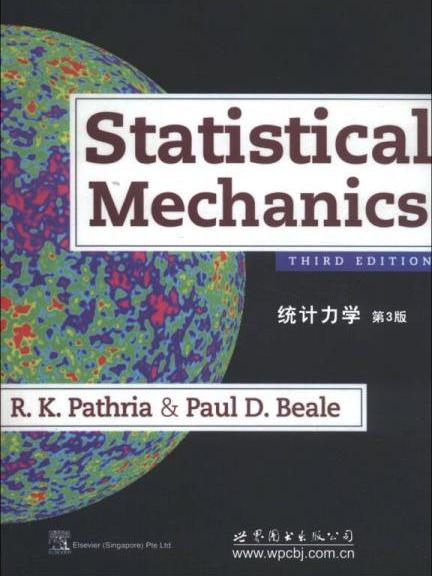3.1. equilibrium between a system and a heat reservoir
3.2. a system in the canonical ensemble
3.3. physical significance of the various statistical quantitiesin the canonical ensemble
3.4. alternative expressions for the partition function
3.5. the classical systems
3.6. energy fluctuations in the canonical ensemble:correspondencewith the microcanonical ensemble
3.7. two theorems - the "equipartition" and the "virial"
3.8. a system of harmonic oscillators
3.9. the statistics of paramagnetism
3.10. thermodynamics of magnetic systems:negativetemperatures
problems
4. the grand canonical ensemble
4.1. equilibrium between a system and a particle-energyreservoir
4.2. a system in the grand canonical ensemble
4.3. physical significance of the various statisticalquantities
4.4. examples
4.5. density and energy fluctuations in the grand canonicalensemble: correspondence with other ensembles
4.6. thermodynamic phase diagrams
4.7. phase equilibrium and the clausius-clapeyron equation
problems
5. formulation of quantum statistics
5.1. quantum-mechanical ensemble theory:the density matrix
5.2. statistics of the various ensembles
5.3. examples
5.4. systems composed of indistinguishable particles
5.5. the density matrix and the partition function of a system offree particles
problems
6. the theory of simple gases
6.1. an ideal gas in a quantum-mechanical microcanonicalensemble
6.2. an ideal gas in other quantum-mechanical ensembles
6.3. statistics of the occupation numbers
6.4. kinetic considerations
6.5. gaseous systems composed of molecules with internalmotion
6.6. chemical equilibrium problems
7. ideal bose systems
7.1. thermodynamic behavior of an ideal bose gas
7.2. bose-einstein condensation in ultracold atomic gases
7.3. thermodynamics of the blackbody radiation
7.4. the field of sound waves
7.5. inertial density of the sound field
7.6. elementary excitations in liquid helium ii
problems
8. ideal fermi systems
8.1. thermodynamic behavior of an ideal fermi gas
8.2. magnetic behavior of an ideal fermi gas
8.3. the electron gas in metals
8.4. ultracold atomic fermi gases
8.5. statistical equilibrium of white dwarf stars
8.6. statistical model of the atom
problems
9. thermodynamics of the early universe
9.1. observational evidence of the big bang
9.2. evolution of the temperature of the universe
9.3. relativistic electrons, positrons, and neutrinos
9.4. neutron fraction
9.5. annihilation of the positrons and electrons
9.6. neutrino temperature
9.7. primordial nucleosynthesis
9.8. recombination
9.9. epilogue
problems
10. statistical mechanics of interacting systems:the method ofcluster expansions
10.1. cluster expansion for a classical gas
10.2. virial expansion of the equation of state
10.3. evaluation of the virial coefficients
10.4. general remarks on cluster expansions
10.5. exact treatment of the second virial coefficient
10.6. cluster expansion for a quantum-mechanical system
10.7. correlations and scattering
problems
11. statistical mechanics of interacting systems:the method ofquantized fields
11.1. the formalism of second quantization
11.2. low-temperature behavior of an imperfect bose gas
11.3. low-lying states of an imperfect bose gas
11.4. energy spectrum of a bose liquid
11.5. states with quantized circulation
11.6. quantized vortex rings and the breakdown ofsuperfluidity
11.7. low-lying states of an imperfect fermi gas
11.8. energy spectrum of a fermi liquid: landau's phenomenologicaltheory
11.9. condensation in fermi systems
problems
12. phase transitions: criticality, universality, and scaling
12.1. general remarks on the problem of condensation
12.2. condensation of a van der waals gas
12.3. a dynamical model of phase transitions
12.4. the lattice gas and the binary alloy
12.5. ising model in the zeroth approximation
12.6. ising model in the first approximation
12.7. the critical exponents
12.8. thermodynamic inequalities
12.9. landau's phenomenological theory
12.10. scaling hypothesis for thermodynamic functions
12.11. the role of correlations and fluctuations
12.12. the critical exponents v and
12.13. a final look at the mean field theory
problems
13. phase transitions: exact (or almost exact) results for variousmodels
13.1. one-dimensional fluid models
13.2. the ising model in one dimension
13.3. the n-vector models in one dimension
13.4. the ising model in two dimensions
13.5. the spherical model in arbitrary dimensions
13.6. the ideal bose gas in arbitrary dimensions
13.7. other models
problems
14. phase transitions: the renormalization group approach
14.1. the conceptual basis of scaling
14.2. some simple examples of renormalization
14.3. the renormalization group: general formulation
14.4. applications of the renormalization group
14.5. finite-size scaling
problems
15. fluctuations and nonequilibrium statistical mechanics
15.1. equilibrium thermodynamic fluctuations
15.2. the einstein-smoluchowski theory of the brownianmotion
15.3. the langevin theory of the brownian motion
15.4. approach to equilibrium: the fokker-planck equation
15.5. spectral analysis of fluctuations: the wiener-khintchinetheorem
15.6. the fluctuation-dissipation theorem
15.7. the onsager relations
problems
16. computer simulations
16.1. introductionand statistics
16.2. monte carlo simulations
16.3. molecular dynamics
16.5. computer simulation caveats
problems
appendices
a. influence of boundary conditions on the distribution of quantumstates
b. certain mathematical functions
c. "volume" and "surface area" of an n-dimensional sphere ofradius r
d. on bose-einstein functionse. on fermi-dirac functions
f. a rigorous analysis of the ideal bose gas and the onset ofbose-einstein condensation
g. on watson functions
h. thermodynamic relationships
i. pseudorandom numbers
bibliography

